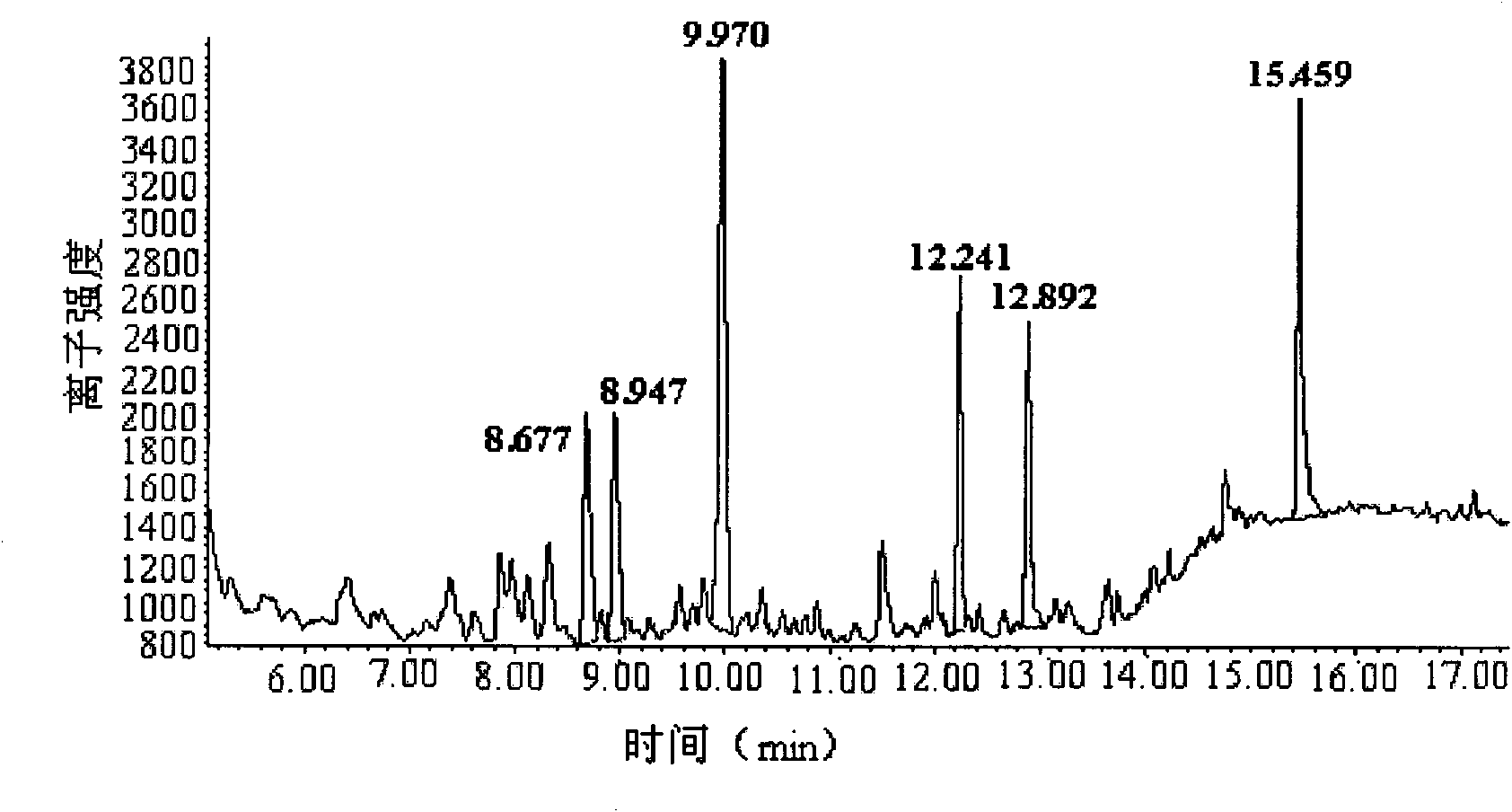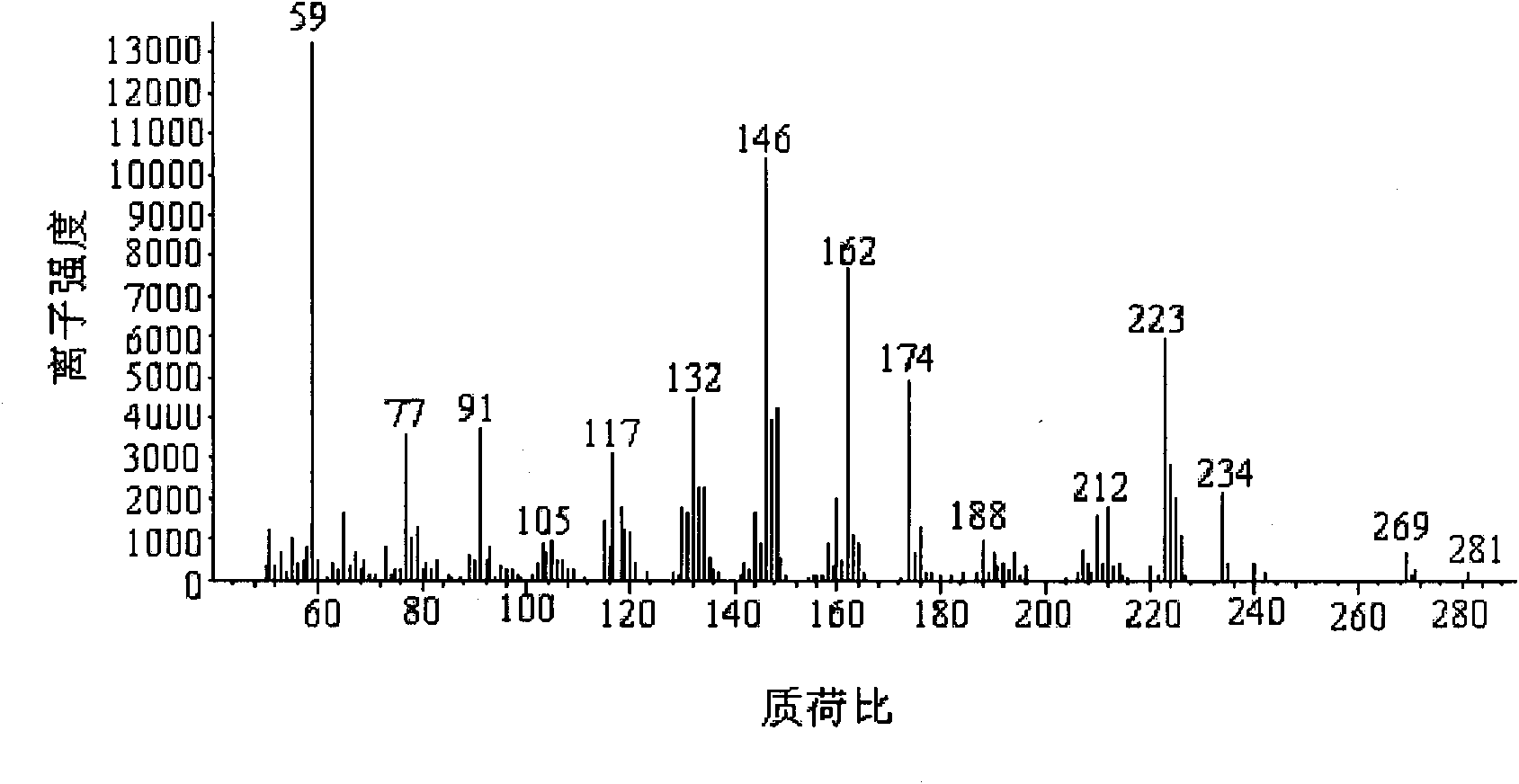Method for detecting amide and triazine herbicide residues in water body by utilizing graphene
A technology of triazines and herbicides, which is applied in the field of pesticide residue analysis in water bodies, can solve the problems of adverse effects on the environment and operators, cumbersome operation process, and large amount of solvent, so as to avoid pre-leaching activation, use less amount, Avoid the effect of repeated extraction
- Summary
- Abstract
- Description
- Claims
- Application Information
AI Technical Summary
Problems solved by technology
Method used
Image
Examples
Embodiment 1
[0027] Add standard solutions of alachlor, acetochlor, pretilachlor, butachlor, and metolachlor to 20 mL of deionized water so that the concentration in the water is 100 μg / L, and dilute the water sample with dilute hydrochloric acid. The pH of the sample was adjusted to 3, and then 30 mg of graphene was added to the water sample, stirred and left to stand for 60 minutes. Then the water sample was quickly passed through the filter device, and after being drained, it was eluted with 10 mL of ethyl acetate: acetone (V: V = 1: 1), the flow rate was controlled at 1 mL / min, and the elution solvent was inoculated with 2 g of anhydrous sodium sulfate. Put it into a chicken heart bottle, then rotary evaporate at 30°C to nearly dry, then blow dry with nitrogen, and finally use 2mL of n-hexane to make up the volume, pour it into the sample injection vial and use Agilent GC-MS detection, HP-5MS column, sample injection Port temperature: 290°C; column temperature: 120°C for 1min, rise to ...
Embodiment 2
[0029]Add standard solutions of atrazine, simazine, and colazine to 200 mL of deionized water, so that the concentration in the water is 50 μg / L, adjust the pH of the water sample to 11 with dilute ammonia water, and then add Add graphene 10mg in the sample, leave standstill for 5 minutes after stirring. Then the water sample was quickly passed through the filter device, pumped, and eluted with 3mL of n-hexane with a flow rate of 0.4mL / min. Evaporate to nearly dryness, then blow dry with nitrogen, and finally use 2mL of methanol to make up the volume, pour it into the sample injection vial and use Shimadzu HPLC-UVD detection, Shimadzu C18 reverse-phase chromatographic column, mobile phase: A pure water, B acetonitrile, Gradient elution conditions: 5% B for 2 min, B becomes 25% after 8 min, 70% after 8 min, 100% after 7 min, flow rate 1mL / min, injection volume: 20μL, detection wavelength: 215nm. The used graphene and the small column were washed twice with 10 mL of ethyl aceta...
Embodiment 3
[0031] In 1000mL of deionized water, add standard solutions of promethazine, proprazine, ketazine, terbuthine, prometon, isopropyl, and methoxypropane, so that the concentration in the water is 0.1 μg / L, Adjust the pH to 7, then add 50 mg of graphene to the water sample, stir and let stand for 30 minutes. Then the water sample was quickly passed through the filter device, and after being drained, it was eluted with 15mL of dichloromethane, the flow rate was controlled at 8mL / min, and the elution solvent was passed through 5g of anhydrous sodium sulfate into a chicken heart bottle, and then spun at 60°C. Evaporate to nearly dryness, then blow dry with nitrogen, and finally use 1mL ethyl acetate to make up the volume, pour it into the injection vial and use Agilent GC-NPD to detect, HP-5 column, injection port temperature: 230°C, detector: 300°C , column temperature: keep at 60°C for 2min, increase to 150°C at a rate of 15°C / min, then increase to 260°C at a rate of 15°C / min, and...
PUM
| Property | Measurement | Unit |
|---|---|---|
| thickness | aaaaa | aaaaa |
Abstract
Description
Claims
Application Information
 Login to View More
Login to View More - R&D
- Intellectual Property
- Life Sciences
- Materials
- Tech Scout
- Unparalleled Data Quality
- Higher Quality Content
- 60% Fewer Hallucinations
Browse by: Latest US Patents, China's latest patents, Technical Efficacy Thesaurus, Application Domain, Technology Topic, Popular Technical Reports.
© 2025 PatSnap. All rights reserved.Legal|Privacy policy|Modern Slavery Act Transparency Statement|Sitemap|About US| Contact US: help@patsnap.com



